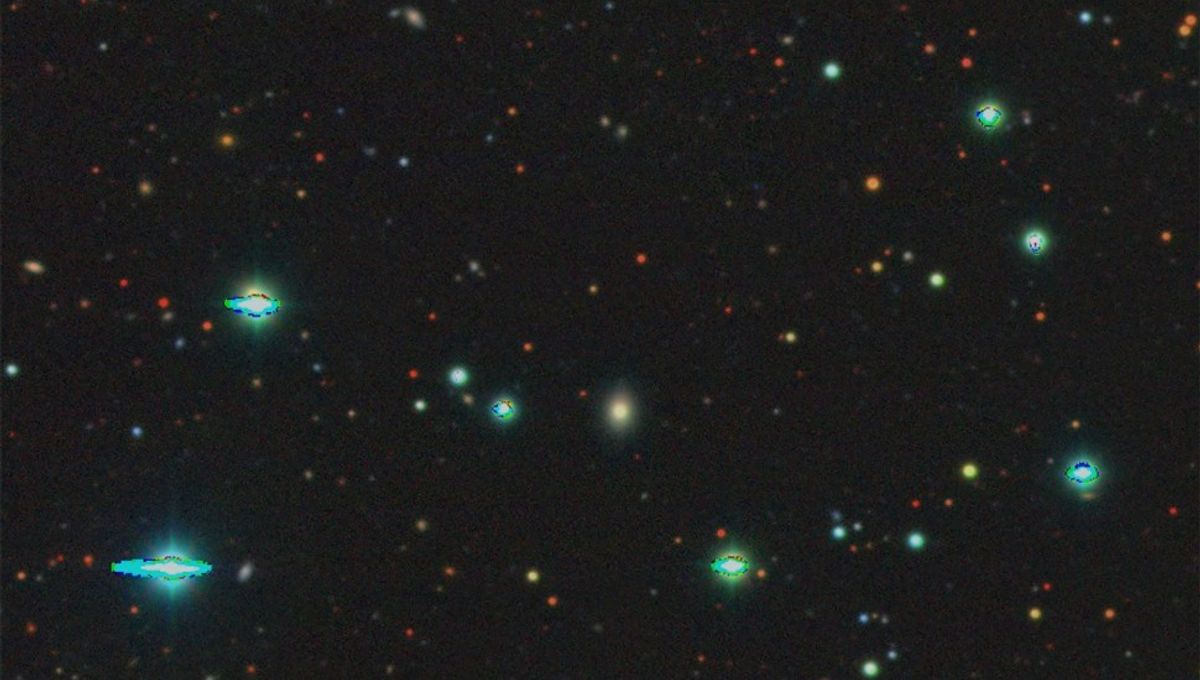
At least in astronomy, AI seems to be delivering on the promise of helping humans by doing tedious time-consuming jobs. A series of robotic telescopes and machine learning algorithms have been able to work together to first detect a possible supernova, then follow up the observations to confirm it, classify its type, and then share the news with the astronomical community. And all of that, in a matter of days.
The new tool is called Bright Transient Survey Bot (BTSbot), and it successfully ran its first real-life test last week. On October 3, the Zwicky Transient Facility (ZTF) – a robotic observatory that automatically images the night sky – discovered a candidate source that was not there before. It is called SN2023tyk, and BTSbot found it in the ZTF data two days later and assessed it as a worthwhile candidate.
This is usually the job of a human, working out whether a candidate is good or not. Then, an astronomer would ask an observatory to study the event and collect a light spectrum, basically having the light pass through a prism so you can see all the colors. The spectrum of an object is like a fingerprint – it tells them what type of supernova it is.
Once it found the interesting candidate in the ZTF data, BTSbot contacted another robotic telescope – the SED Machine at the Palomar Observatory – to collect the spectrum. The spectrum was then analyzed by a second algorithm, SNIascore, which determined the event was a Type Ia supernova. This is a supernova created by a white dwarf stealing so much mass from a companion that it ends up collapsing on itself and going boom.
Once the supernova was confirmed and classified, there was only one thing for BTSbot to do: share it with the world. The bot announced the discovery on October 7 by sharing it on the International Astronomical Union’s Supernova working group website.
“For the first time ever, a series of robots and AI algorithms has observed, then identified, then communicated with another telescope to finally confirm the discovery of a supernova,” Northwestern University’s Adam Miller, who led the work, said in a statement.
“This represents an important step forward as further refinement of models will allow the robots to isolate specific subtypes of stellar explosions. Ultimately, removing humans from the loop provides more time for the research team to analyze their observations and develop new hypotheses to explain the origin of the cosmic explosions that we observe.”
“We achieved the world’s first fully automatic detection, identification and classification of a supernova,” added Northwestern’s Nabeel Rehemtulla, who co-led the technology development with Miller. “This significantly streamlines large studies of supernovae, helping us better understand the life cycles of stars and the origin of elements supernovae create, like carbon, iron and gold.”
The researchers estimated that they have previously spent a huge amount of work hours on the automatically collected data from ZTF. The new approach streamlines those operations, allowing researchers to have more time to actually study the objects and refine our understanding of supernovae and the cosmos.
“The Zwicky Transient Facility (ZTF) has been operating for the past six years, and, during that time, I and others have spent more than 2,000 hours visually inspecting candidates and determining which to observe with spectroscopy,” said Christoffer Fremling, an astronomer at the California Institute of Technology (Caltech) who developed the SNIascore tool and contributed to the development of BTSbot. “Adding BTSbot to our workflow will eliminate the need for us to spend time inspecting these candidates.”
The system was developed by Northwestern University researchers in collaboration with astronomers at Caltech, the University of Minnesota, Liverpool John Moores University, and Stockholm University.
Curious about artificial intelligence? Join us for our first-ever free virtual festival of science, CURIOUS Live, where we’ll be talking about the Turing Test and what it means when a machine passes it. Streaming online on October 21, 2023, we have a line-up of fascinating experts discussing all things Life, Death, and Creation (y’know, the small stuff) across three festival “stages”. Sign up now to find out more and secure your spot.
Source Link: Supernova Detected, Confirmed, And Classified By AI For The First Time